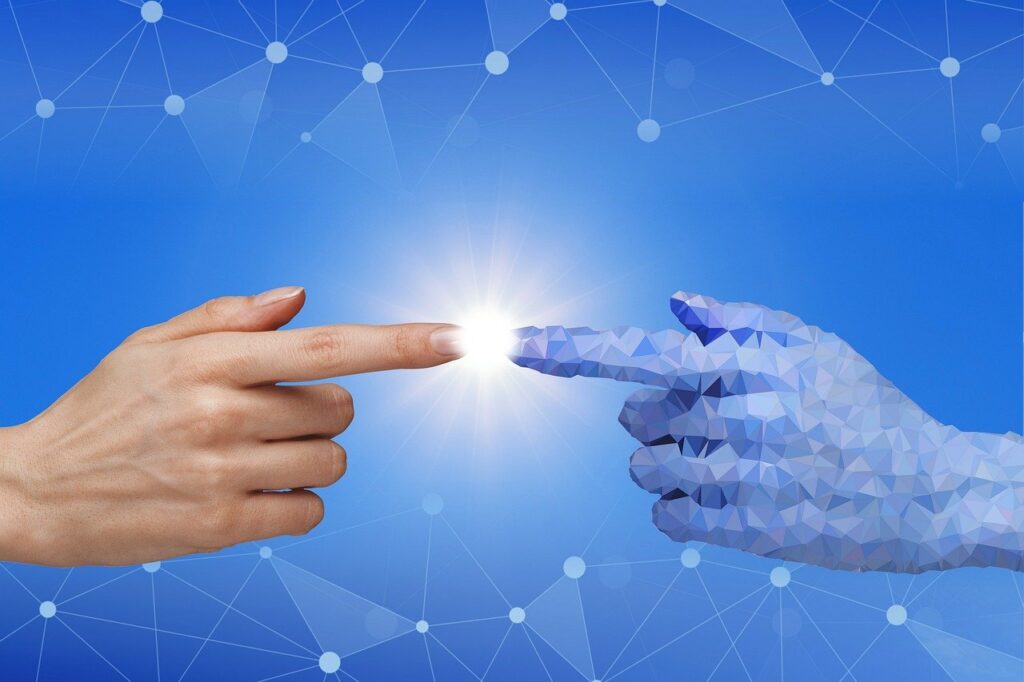In the ever-evolving world of law and jurisprudence, the ability to identify patterns and extract valuable insights from vast legal databases has become increasingly critical. This is where the remarkable capabilities of Artificial Intelligence (AI) and Machine Learning (ML) come into play. In this comprehensive article, we will explore the profound impact of AI, particularly Legal AI, in identifying jurisprudence patterns. We’ll delve into the nuances of machine learning techniques, their applications in legal practice, and how AI Chat Assistants are revolutionizing the legal industry.
Understanding Jurisprudence Patterns
Before we delve into the role of AI in identifying jurisprudence patterns, it’s crucial to grasp what these patterns are and why they matter in the realm of law.
What Are Jurisprudence Patterns?
Jurisprudence patterns are recurring themes, arguments, or decision-making criteria that emerge in legal cases over time. They are the result of complex interactions between legal doctrines, historical precedents, and the evolving societal norms. Recognizing these patterns can be immensely beneficial in various legal contexts, including legal research, case prediction, and formulating effective legal strategies.

The Significance of Jurisprudence Patterns
- Legal Research: Legal scholars and practitioners often engage in exhaustive research to understand how previous cases have been decided. Identifying jurisprudence patterns can streamline this process, allowing lawyers to find relevant precedents more efficiently.
- Case Prediction: AI-driven models that can identify jurisprudence patterns can be used to predict the outcome of ongoing cases based on historical data. This can be a game-changer for litigation strategies.
- Policy Formulation: Governments and policymakers can benefit from insights gained through the analysis of jurisprudence patterns. This data can inform the creation or amendment of laws and regulations to align with societal expectations and legal principles.
Now that we have a clear understanding of jurisprudence patterns, let’s explore how AI, particularly Legal AI, is revolutionizing the legal landscape.
Legal AI: The Driving Force
Legal AI refers to the application of artificial intelligence and machine learning technologies in the field of law. It encompasses a wide range of tools and applications designed to enhance the practice of law, and one of its most powerful applications lies in identifying jurisprudence patterns.
Machine Learning and Legal Practice
At the heart of Legal AI’s ability to identify jurisprudence patterns lies machine learning. Machine learning algorithms can analyze vast amounts of legal data, recognize patterns, and make predictions based on historical legal decisions. Here’s how it works:
Data Collection and Preprocessing
The first step in using machine learning to identify jurisprudence patterns involves collecting and preprocessing legal data. This data includes court cases, statutes, regulations, and legal opinions. Once collected, the data must be cleaned and structured for analysis.
Feature Extraction
In the context of legal practice and machine learning, features represent specific elements or attributes within legal documents. These could be keywords, legal concepts, dates, or any other information relevant to the analysis. Feature extraction involves selecting and extracting these elements from the legal documents.
Training the Model
Machine learning models are trained using labeled datasets. In the case of identifying jurisprudence patterns, the model is provided with historical legal cases and their outcomes. The model learns to recognize patterns in the data, such as the legal principles applied and the factors influencing decisions.
Pattern Recognition
Once the model is trained, it can be used to analyze new legal cases. It identifies patterns by comparing the features of the new cases to the patterns it has learned during training. This enables it to make predictions about the likely outcome of a case or highlight relevant jurisprudence patterns.
Applications of Legal AI in Identifying Jurisprudence Patterns
Legal Research Assistance:
Legal research is the backbone of any legal practice, and AI-powered tools have ushered in a new era of efficiency and precision in this critical area. These tools assist legal professionals in finding relevant cases and legal documents by deploying advanced algorithms that identify patterns and similarities within vast legal databases. Imagine a legal researcher faced with the daunting task of sifting through years of case law to find precedents relevant to a complex issue. AI steps in as a formidable ally, swiftly and accurately retrieving cases with analogous legal principles and fact patterns. This not only significantly expedites the research process but also reduces the risk of overlooking crucial precedents. Legal professionals can now focus their expertise on analyzing the retrieved data rather than spending excessive hours searching for it, ultimately delivering more value to clients and ensuring that cases are built on a solid foundation of comprehensive research.
Predictive Analytics:
Legal AI’s predictive analytics capabilities have fundamentally altered the landscape of litigation strategy. By analyzing jurisprudence patterns and historical data, Legal AI can predict the likely outcomes of cases with remarkable accuracy. This isn’t fortune-telling; it’s a data-driven approach to understanding how legal decisions have historically been made in similar situations. For lawyers, this predictive power is a game-changer. They can now devise litigation strategies with a deeper understanding of the potential outcomes, allowing them to advise clients more effectively on the risks and rewards associated with pursuing a particular course of action. It’s akin to having a crystal ball that’s rooted in legal precedent rather than mysticism. Legal AI empowers lawyers to make strategic decisions based on data, ultimately increasing their chances of success in the courtroom.
Document Review and Due Diligence:
The tedious and time-consuming process of document review and due diligence is an area where Legal AI shines. In tasks such as contract review, merger and acquisition due diligence, or compliance assessments, AI tools can quickly scan and identify important clauses, potential issues, or areas of non-compliance within complex legal documents. These AI systems excel at recognizing patterns, whether it’s specific contractual language, regulatory requirements, or potential liabilities. By automating this process, legal professionals can expedite due diligence processes that would typically take days or weeks into a matter of hours. Moreover, the reduction in human error ensures a more thorough and accurate review, mitigating the risk of overlooking critical details. This not only saves time and resources but also enhances the quality and comprehensiveness of the review process, minimizing legal exposure and maximizing compliance.
Compliance Monitoring:
In today’s dynamic regulatory landscape, staying compliant with evolving laws and regulations is a paramount concern for organizations. Legal AI comes to the rescue by enabling compliance monitoring on a scale and depth that would be humanly impossible. AI systems can continuously analyze jurisprudence patterns and legal developments to detect changes that may impact a company’s legal obligations. For instance, if there is a shift in how courts interpret a specific regulatory requirement, Legal AI can promptly identify and alert relevant stakeholders. This proactive approach to compliance ensures that organizations remain agile and responsive to legal changes, reducing the risk of costly non-compliance penalties. Legal AI not only safeguards against legal pitfalls but also fosters a culture of proactive compliance within organizations, ultimately protecting their reputation and bottom line.

Policy Analysis:
Governments and legal experts wield Legal AI as a powerful tool for policy analysis and evaluation. By analyzing jurisprudence patterns, AI can provide insights into how laws and policies have been interpreted and applied over time. This data-driven approach enables policymakers to make informed decisions about policy changes or amendments. For instance, if certain laws consistently result in unintended consequences or inefficiencies, Legal AI can highlight these patterns, prompting policymakers to revisit and refine the legislation. Furthermore, it aids in assessing the effectiveness of existing laws and policies in achieving their intended goals. This evidence-based approach to policy analysis ensures that legislative decisions are rooted in empirical data rather than conjecture, leading to more robust and well-informed governance.
Incorporating Legal AI into legal research, predictive analytics, document review, compliance monitoring, and policy analysis is a testament to its transformative potential. By harnessing the capabilities of machine learning and pattern recognition, Legal AI not only enhances the efficiency of legal practice but also elevates the quality and accuracy of legal outcomes. It is a tool that empowers legal professionals and organizations to navigate the complexities of jurisprudence with confidence and competence.
The Rise of AI Chat Assistants in Legal Practice
While machine learning algorithms play a pivotal role in identifying jurisprudence patterns, the way legal professionals interact with these technologies is evolving. AI Chat Assistants are emerging as a user-friendly and accessible interface between lawyers and AI-powered legal tools.
What Are AI Chat Assistants?
AI Chat Assistants are conversational AI programs designed to understand and respond to natural language inputs. They can interpret questions, provide information, and even perform tasks on behalf of the user. In the context of legal practice, AI Chat Assistants are becoming indispensable.
How AI Chat Assistants Enhance Legal Practice
Streamlined Access to Legal Data
AI Chat Assistants are transforming the way legal professionals access crucial information. Instead of spending hours navigating labyrinthine databases or legal research platforms, lawyers can now simply converse with AI Chat Assistants to swiftly retrieve specific cases or legal documents. This streamlined access not only saves valuable time but also reduces the risk of missing vital precedents. With AI Chat Assistants, lawyers can focus on their core tasks while the technology handles the grunt work of information retrieval.
Quick Legal Analysis
AI Chat Assistants serve as invaluable allies in the realm of legal analysis. They possess the capability to provide on-the-spot legal analysis, a task that would traditionally require extensive manual research. When confronted with a particular case or legal issue, legal professionals can rely on AI Chat Assistants to summarize relevant jurisprudence patterns and legal principles. This rapid analysis empowers lawyers to make informed decisions promptly, whether it’s formulating a legal strategy, advising a client, or preparing for litigation.
Case Outcome Predictions
Predicting the outcome of legal cases is a skill honed through years of experience and legal acumen. However, AI Chat Assistants are changing this paradigm by harnessing the power of historical data and machine learning. Lawyers can now pose questions to AI Chat Assistants about the likely outcome of a case based on similar historical cases and jurisprudence patterns. This predictive capability provides lawyers with valuable insights into the potential risks and rewards associated with a case, enabling them to strategize more effectively and manage client expectations.
Efficient Communication
Effective communication is the lifeblood of any legal team. AI Chat Assistants play a pivotal role in facilitating efficient communication within legal teams. They can act as intermediaries, helping distribute tasks, providing real-time updates, and even answering questions posed by team members. This enhanced communication streamlines collaboration, ensuring that everyone is on the same page and reducing the likelihood of misunderstandings. AI Chat Assistants become indispensable team members, enhancing overall productivity and cohesion.
24/7 Availability
The legal profession doesn’t adhere to a standard 9-to-5 schedule. Legal emergencies can arise at any hour, and clients often require immediate assistance. AI Chat Assistants offer a solution to this challenge by being available round the clock. Whether it’s a late-night contract review or an early morning case assessment, legal professionals can rely on AI Chat Assistants to provide assistance whenever they are needed. This 24/7 availability ensures that lawyers can respond promptly to clients’ needs and maintain a high level of service quality.
Incorporating AI Chat Assistants into legal practice represents a paradigm shift that not only streamlines operations but also empowers lawyers to make more informed decisions. By leveraging the capabilities of Legal AI through AI Chat Assistants, legal professionals can navigate the complex world of jurisprudence patterns with greater efficiency and effectiveness, ultimately delivering better outcomes for their clients and enhancing the practice of law.
Challenges and Ethical Considerations
While the integration of AI in identifying jurisprudence patterns is transformative, it also raises important challenges and ethical considerations that must be addressed.
Data Privacy and Security
Legal data often contains sensitive and confidential information. Ensuring the privacy and security of this data when using AI tools is of utmost importance. Legal professionals must be vigilant in protecting client information.
Bias in AI
Machine learning algorithms can inadvertently perpetuate biases present in historical legal decisions. This can lead to unfair outcomes and reinforce existing inequalities. Addressing and mitigating bias in AI is an ongoing challenge.
Accountability and Interpretability
As AI becomes more involved in legal practice, questions of accountability arise. Who is responsible if an AI system provides incorrect legal advice or predictions? Additionally, making AI systems more interpretable and transparent is crucial for ensuring trust and ethical use.
Legal Profession Adaptation
The legal profession must adapt to the changing landscape of AI. This involves providing training to lawyers and legal professionals to effectively use AI tools and understand their limitations.

Conclusion
In conclusion, AI, particularly Legal AI, is playing a pivotal role in identifying jurisprudence patterns, revolutionizing legal practice. Machine learning techniques enable the recognition of recurring themes and decision-making criteria in legal cases, enhancing legal research, case prediction, and policy formulation. AI Chat Assistants further facilitate the integration of AI into legal practice by providing a user-friendly interface for accessing AI-powered tools.
However, as AI becomes more integrated into the legal landscape, it is crucial to address challenges related to data privacy, bias, accountability, and the adaptation of the legal profession. These considerations will shape the responsible and ethical use of AI in identifying jurisprudence patterns and ensuring a more efficient and equitable legal system.
